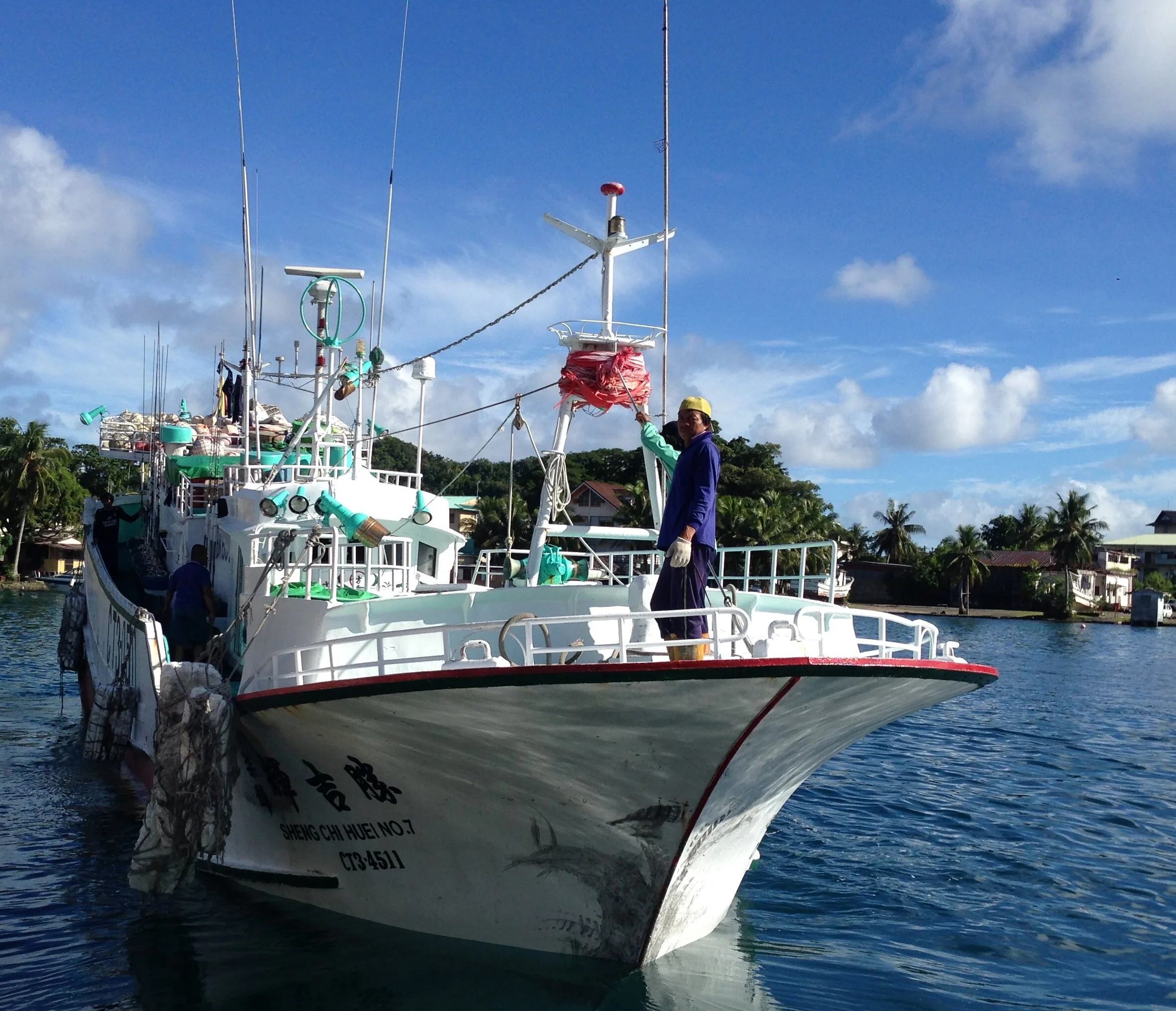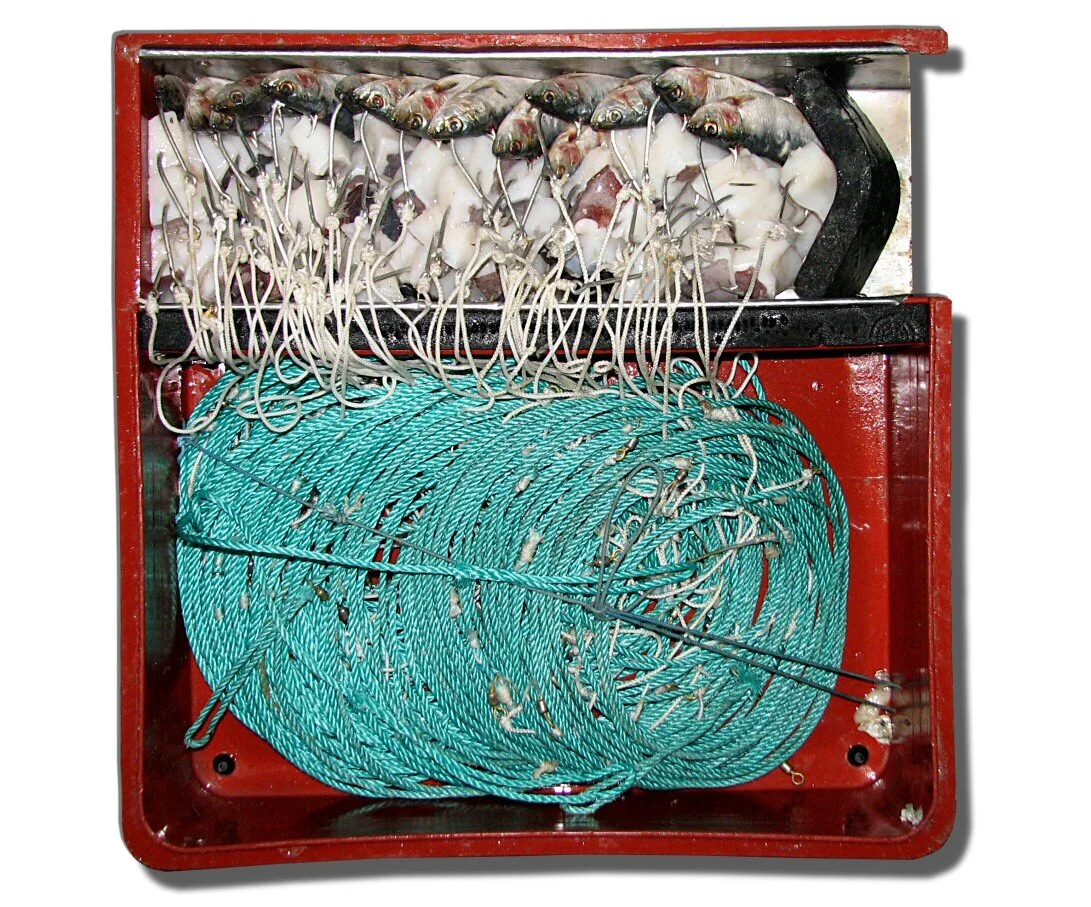Managing Tuna Fisheries’ Bait Type to Conserve Imperiled Species
By Eric Gilman, Safina Center Fellow
Atlantic bluefin tuna. Photo: Carl Safina
As the United Nations gets closer to adopting a much-needed treaty on the conservation and sustainable use of marine biological diversity in international waters, it is timely to take stock of how we manage fisheries for highly migratory species such as tunas.
Tunas and related species have been important food sources since ancient times and are now target species of fisheries worldwide. In the 19th Century, most tuna fisheries were coastal, conducted by locally-based fleets. Industrial tuna fisheries commenced in the 1940s. Over the following decades, fishing grounds expanded in areas both within and beyond national jurisdiction, as did the number of counties with large-scale tuna fleets, as the demand for tuna rapidly increased. Tunas and related species now account for over 9% of the total marine fisheries catch, and are the fifth most valuable globally traded fish.
Taiwanese longline vessel coming to shore to unload. Photo: Eric Gilman
Longline hooks baited with sardina and giant Peruvian squid (Dosidicus gigas) prepared for Antarctic toothfish (Dissostichus mawsoni) fishing. Photo: Dr. Gennadiy A. Shandikov (Wikimedia Commons)
Drifting open-water longline gear—fishing lines that run up to 28 miles long, each equipped with up to thousands of hand-baited hooks—is one of the primary gear types used to catch tunas, billfishes and related species. But longline fisheries also catch species of conservation concern that share the same habitat as these target species. Unlike relatively productive tunas, many bycatch species, including marine turtles, seabirds, sharks, rays and toothed whales, have ‘slow’ life histories with low reproduction rates, putting their populations at higher risk of being harmed by human activities.
Albatross taking a squid bait. Photo: National Marine Fisheries Service/Tony Santos
Over the past several months I’ve been working with a team of eight researchers from Australia, China, Fiji, France, the UK and the US to conduct a global meta-analysis—a syntheses of accumulated research (see my April blog, How can findings from two robust studies conflict? How do I know if conservation advice to save marine turtles is harming sharks? Synthesis science to the rescue!)—on the effect of different bait types used in drifting, open-ocean longline fisheries on catch rates of different species. We plan to publish results later this year. This is one of three studies of my Safina Fellowship, supported by the Pew Fellows Program in Marine Conservation at The Pew Charitable Trusts and Vulcan Inc.
Bait type offers one tool to manage the risk of catching different species on longlines and with other fishing gear. Different marine predator species have different preferences for prey, and similarly different bait preferences. This preference is a function of a bait’s chemical, visual, acoustic and textural characteristics and size. For seabirds, how quickly bait sinks a hook below the surface is also important.
Preliminary results suggest that, relative to using squid bait, using fish bait results in lower catch risk of several species of conservation concern, including marine turtles and blue sharks, the most frequent species of shark caught in global pelagic longline fisheries. However, there may be conflicting effects. Using fish bait benefits blue sharks but findings suggest that this might increase catches of other shark species. Also, tunas and shallow-habitat billfishes may have higher catch rates on squid bait. For fisheries targeting these species, this presents a conflict between using fish bait to reduce catch risk of marine turtles and blue sharks. This may also present a conflict between maximizing catches of target tunas and mitigating the catch of overexploited stocks of incidentally caught tunas and billfishes such as Pacific bluefin tuna and southwest Pacific striped marlin.
Findings promise to enable fisheries managers and major seafood buyers to determine how to manage bait type to reduce pressure on at-risk bycatch species with acceptable tradeoffs when multispecies conflicts are unavoidable.
As with hook shape, time-of-day of fishing and fishing depth, our preliminary results suggest that we now must add bait type to the list of bycatch mitigation methods that cause multispecies conflicts. This highlights the need to transition from piecemeal to integrated bycatch assessment and management (see our 2019 article, Robbing Peter to pay Paul: Replacing unintended cross-taxa conflicts with intentional tradeoffs by moving from piecemeal to integrated fisheries bycatch management).
Piecemeal assessments and management of fisheries bycatch are prevalent problems. Using the findings on how prescribing bait type can contribute to managing bycatch, we are now turning our attention to conducting ecological risk assessments of tuna longline fisheries. This may help determine which populations are of most vulnerable from mortality. We are also developing and will apply a “decision tree”—a flowchart of choices linked to specific consequences—in these tuna fisheries to identify opportunities to increase fishing selectivity to mitigate the bycatch of the most vulnerable populations while accounting for multispecies conflicts.




